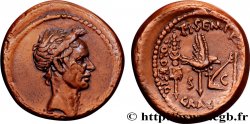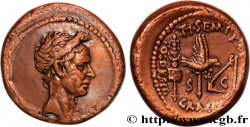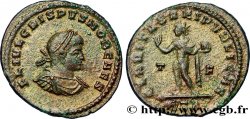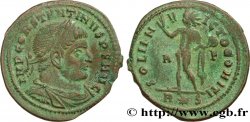Nicht verfügbar.
Artikel auf unserem Online-Shop verkauft (2013)
Preis : 950.00 €
Artikel auf unserem Online-Shop verkauft (2013)
Preis : 950.00 €
Type : Denier
Datum: 49 AC.
Name der Münzstätte / Stadt : Gaule ou Italie
Metall : Silber
Der Feingehalt beträgt : 950 ‰
Durchmesser : 19 mm
Stempelstellung : 6 h.
Gewicht : 3,80 g.
Seltenheitsgrad : R1
Kommentare zum Erhaltungszustand:
Exemplaire de qualité exceptionnelle pour ce type sur un flan large, ovale, légèrement décentré mais complet des deux cotés. Droit magnifique avec un éléphant de haut relief, bien venu à la frappe. Très joli revers de style fin avec notamment une hache aux détails fantastiques. Patine grise avec un argent légèrement cristallisé à 12 heures
N° im Nachschlagewerk :
Vorderseite
Titulatur der Vorderseite CAESAR À L'EXERGUE.
Beschreibung Vorderseite Éléphant passant à droite ; à ses pieds, un serpent (ou carnyx, trompette gauloise).
Übersetzung der Vorderseite “Cæsar”, (César).
Rückseite
Titulatur der Rückseite ANÉPIGRAPHE.
Beschreibung Rückseite Instruments pontificaux : simpulum, aspersoir, hache à sacrifice, chapeau à sacrifice.
Kommentare
Pour ce type, M. Crawford a relevé une estimation de 750 coins de droit et de 833 coins de revers, représentant une production qui pourrait avoisiner les deux à quatre millions de deniers. Les auteurs du CMDRR. ont isolé six variétés différentes pour ce denier. Pendant très longtemps, on pensa que ce denier avait été frappé par César pendant la Guerre des Gaules entre 58 et 52 avant J.-C., en Gaule même. En fait, il fut fabriqué au début des Guerres Civiles. Il a été imité servilement par les Trévires avec le bronze HIRTIVS (LT. 9235), fortement romanisé.
For this type, Mr. Crawford noted an estimate of 750 obverse dies and 833 reverse dies, representing a production that could be around two to four million denarii. The authors of the CMDRR. isolated six different varieties for this denarius. For a very long time, it was thought that this denarius had been struck by Caesar during the Gallic Wars between 58 and 52 BC, in Gaul itself. In fact, it was made at the beginning of the Civil Wars. It was slavishly imitated by the Treveri with the bronze HIRTIVS (LT. 9235), heavily Romanized
For this type, Mr. Crawford noted an estimate of 750 obverse dies and 833 reverse dies, representing a production that could be around two to four million denarii. The authors of the CMDRR. isolated six different varieties for this denarius. For a very long time, it was thought that this denarius had been struck by Caesar during the Gallic Wars between 58 and 52 BC, in Gaul itself. In fact, it was made at the beginning of the Civil Wars. It was slavishly imitated by the Treveri with the bronze HIRTIVS (LT. 9235), heavily Romanized







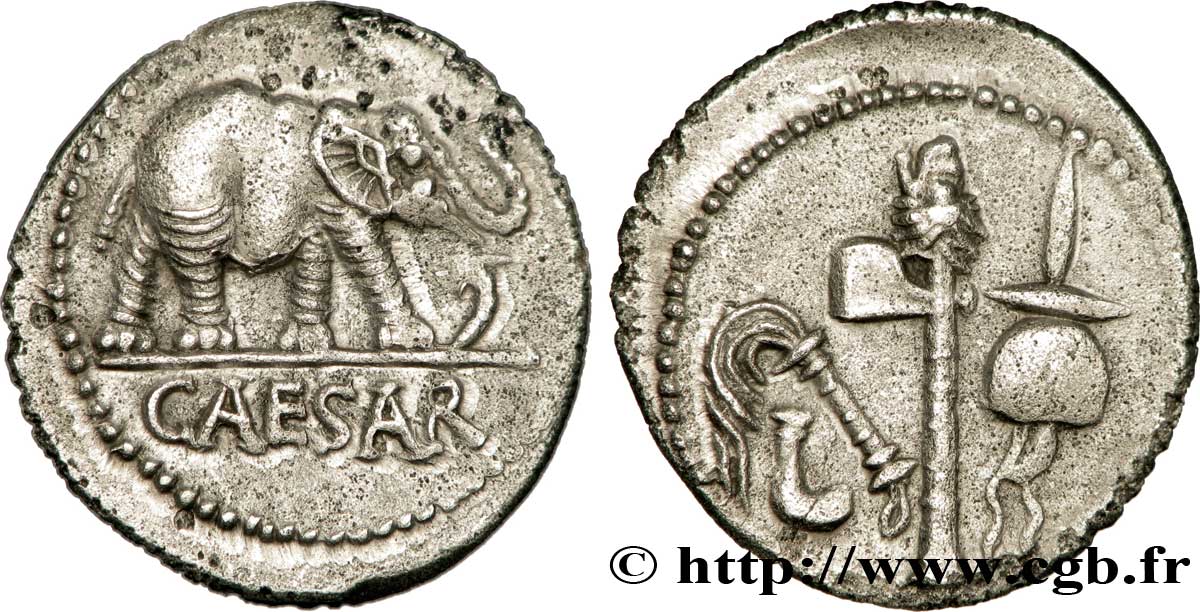
 Berichten über einen Fehler
Berichten über einen Fehler Die Seite drucken
Die Seite drucken Teilen meiner Auswahl
Teilen meiner Auswahl Stellen Sie eine Frage
Stellen Sie eine Frage Einlieferung/Verkauf
Einlieferung/Verkauf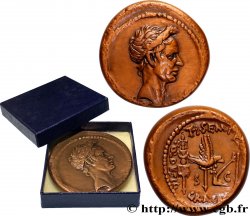
 Details
Details

